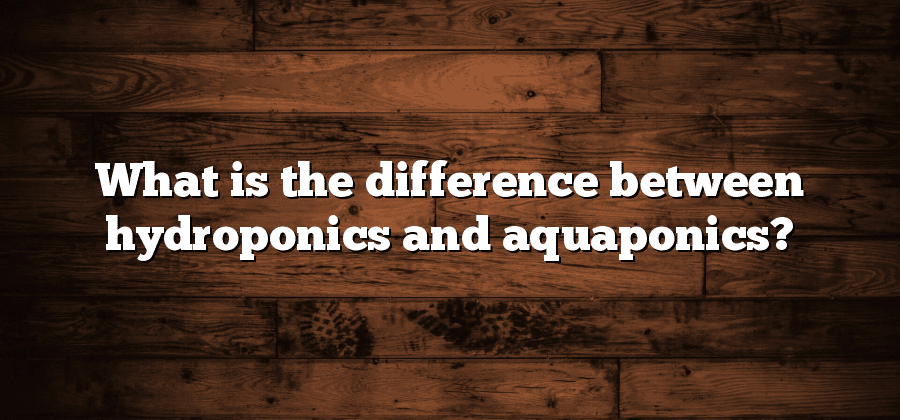Hydroponics: Definition and Principles
Hydroponics is a modern agricultural technique that relies on water instead of soil as the growing medium for plants. This method allows for the precise control of nutrient delivery, giving plants the optimal amount of nutrients they need to grow and flourish. By eliminating the need for soil, hydroponics presents the potential for year-round cultivation and increased crop yields.
The principles of hydroponics revolve around the concept of providing plants with a nutrient-rich water solution that is continuously circulated around their root systems. This ensures that plants have direct access to all the essential elements they require for growth, such as nitrogen, phosphorus, and potassium, among others. The carefully balanced nutrient solution can be adjusted based on the specific needs of different plant species, making hydroponics a versatile approach that can accommodate a variety of crops. With its ability to maximize resource efficiency and minimize the use of pesticides and herbicides, hydroponics offers a promising solution for sustainable farming practices in the face of ongoing environmental challenges.
Hydroponics: Growing Mediums and Nutrient Delivery
Hydroponics relies on growing mediums and nutrient delivery systems to provide plants with the necessary support and nourishment to thrive. The choice of growing medium can greatly impact the success of a hydroponic system. Common options include perlite, vermiculite, coconut coir, and rockwool. These mediums are lightweight, sterile, and retain water and nutrients efficiently, creating an optimal environment for root development.
In addition to the growing medium, nutrient delivery is a key aspect of hydroponic systems. Unlike traditional soil-based farming, where plants extract nutrients from the soil, hydroponics requires a precise balance of nutrients to be provided directly to the plant roots. This is typically achieved through nutrient solutions, which are carefully formulated to meet the specific needs of each plant species. The nutrient solution is circulated through the system, delivering essential elements such as nitrogen, phosphorus, and potassium directly to the plants, allowing for faster growth and higher yields.
Hydroponics: Plant Nutrition and Management
Plant nutrition and management are crucial aspects of hydroponics. In a hydroponic system, plants rely solely on nutrient-rich solutions for their growth and development. Unlike traditional soil-based cultivation, where plants extract nutrients from the soil, hydroponics involves providing optimum nutrient concentrations directly to the plant roots.
One of the key challenges in hydroponics is maintaining a well-balanced nutrient solution. The nutrient solution must contain the essential macronutrients (nitrogen, phosphorus, and potassium) as well as micronutrients (iron, zinc, copper, etc.). Careful monitoring and adjustment of the nutrient levels are necessary to meet the specific requirements of different crops at different growth stages. Additionally, factors such as pH levels, temperature, water quality, and oxygen levels also play a significant role in plant nutrition and must be carefully managed to ensure optimal growth and yield.
In hydroponics, precise control over plant nutrition allows for maximum nutrient uptake and reduces the risk of nutrient deficiencies or toxicities. This level of control is one of the primary advantages of hydroponic systems, as it allows growers to tailor the nutrient solutions to each specific crop’s needs. By providing plants with the exact nutrients they require, hydroponics can enhance plant growth and productivity while minimizing the use of fertilizers and minimizing the environmental impact.
However, achieving optimal plant nutrition and management in hydroponics requires careful planning, monitoring, and adjustment. Growers must regularly test the nutrient solution to ensure the correct balance of nutrients and make necessary adjustments as needed. Additionally, maintaining the proper pH level is vital, as it impacts nutrient availability to the plants. Overall, proper plant nutrition and management are critical factors for success in hydroponics, enabling growers to maximize crop yields and quality.
Hydroponics: Advantages and Disadvantages
Hydroponics, as a method of growing plants without soil, offers several advantages over traditional soil-based agriculture. One of the main advantages is that hydroponics allows for greater control over the growing environment. By providing plants with a precise balance of water, nutrients, and light, growers can optimize plant growth and maximize yield. This level of control also minimizes the risk of pests and diseases, as there is no risk of contaminated soil or exposure to harmful organisms. Additionally, hydroponics requires significantly less water compared to traditional farming, as the water is recirculated within the system, reducing water waste and increasing efficiency.
Despite its many advantages, hydroponics also presents some challenges and potential disadvantages. One major drawback is the initial cost of setting up a hydroponic system. The equipment and materials needed, such as grow lights, pumps, and nutrient solutions, can be expensive, making it less accessible to small-scale growers or those with limited resources. Maintaining and monitoring the hydroponic system also requires a certain level of technical knowledge and expertise, which may be a barrier for some individuals. Furthermore, power outages or equipment failures can quickly disrupt the delicate balance of the system and lead to crop losses. Therefore, careful planning, regular maintenance, and backup systems are necessary to overcome these potential disadvantages and ensure a successful hydroponic operation.
Aquaponics: Definition and Principles
Aquaponics is an innovative and sustainable agricultural system that combines aquaculture and hydroponics. It is a method of growing plants without the use of soil, instead utilizing nutrient-rich water from fish tanks to provide the necessary nourishment. In this closed-loop system, fish waste is converted into nutrients by beneficial bacteria and then absorbed by the plants to foster their growth.
The principles behind aquaponics revolve around creating a harmonious ecosystem where both plants and fish thrive. The fish in the tanks produce waste, which in turn becomes a valuable fertilizer for the plants. However, it is crucial to maintain proper balance and ensure that the water’s nitrate levels do not become toxic to the fish. This is achieved through careful monitoring and regulating of various factors like pH, temperature, and oxygen levels. Additionally, selecting fish species and plant varieties that are well-suited to the specific environmental conditions is key in ensuring successful aquaponics production.






